In 20 years, the archeological "blind box" of Haiqu Han Tomb again
Author:Rizhao News Network Time:2022.08.06

Commemorate the 20th anniversary of archeological excavation
In 20 years, the archeological "blind box" of Haiqu Han Tomb again
Before 2000, the peppercorns, melon seeds, walnuts, peach cores, the popularity of the Han Dynasty ...
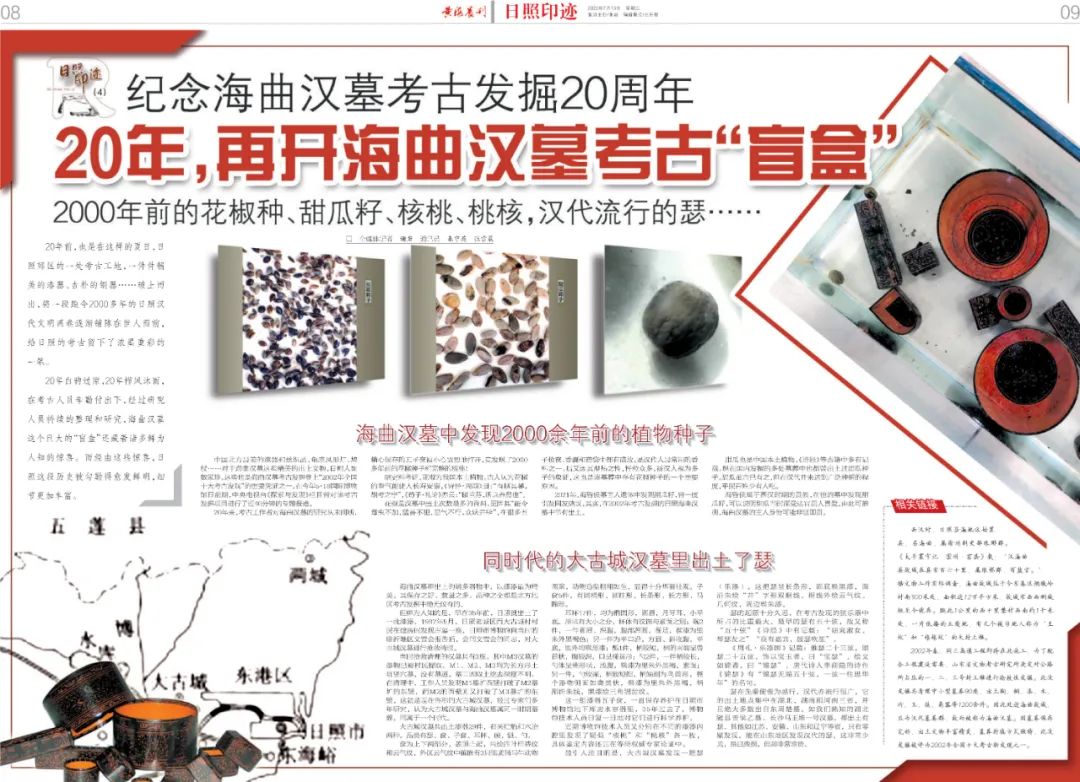
Twenty years ago, in such a summer, a exquisite lacquerware, quaint copper wares in the suburbs of Rizhao ... broke out of the soil, and gradually spread out a section of Rizhao Han Dynasty civilization scroll more than 2000 years ago. In front of the world, the archeology of Rizhao left a strong stroke.
In 20 years, the white horse has passed the gap and the wind and rain in 20 years. Under the hard work of archeologists, after the continuous sorting and research of researchers, the huge "blind box" of Haiqu Hanfu also hidden many little -known surprises. Through these surprises, the history of Rizhao has been outlined and more vivid, and the details are richer.
The seeds of plant more than 2,000 years ago were found in the tomb of Haiqu Han.
The most beautiful lacquer wares and silk fabrics, turtle -shaped phoenix lamps, doves of the northern China ... For the exquisite unearthed cultural relics of Haiqu Han Tomb, Rizhao people are like a few treasures. These are also one of the important vouchers for the archeological excavation of Haiqu Han Tomb. During the May 18th International Museum, CCTV's "Exploration and Discovery" column had conducted a special report of the archeological excavation project for nearly 40 minutes.
In the past 20 years, archaeologists have never stopped research on Haiqu Han Tomb. The carefully preserved five sons were carefully opened, and they found that peppercorns and complete walnuts were found more than 2000 years ago!
According to historical research, peppercorns are Chinese plants. The ancients believed that the aroma of pepper can make people longevity and peace. Essence
The peppercorns are the most unearthed spices in the Han tomb, and because they "can make poisonous insects not add, beasts do not commit crimes, evil qi can not work, and the monsters are coexisting." One of the most commonly used spices in the Han Dynasty. Later, because of its warmth, there were many seeds, and the Han people were regarded as a symbol of multi -child. This is also an important reason why the peppercorn seeds have peppercorn seeds in the tomb.
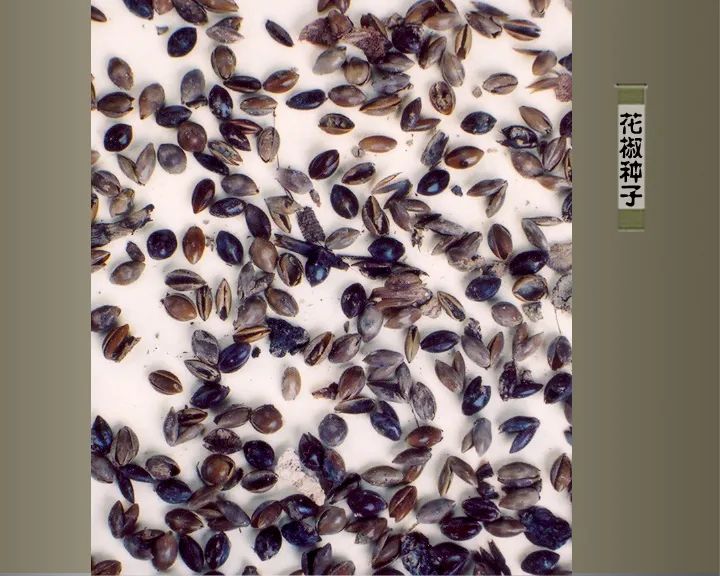
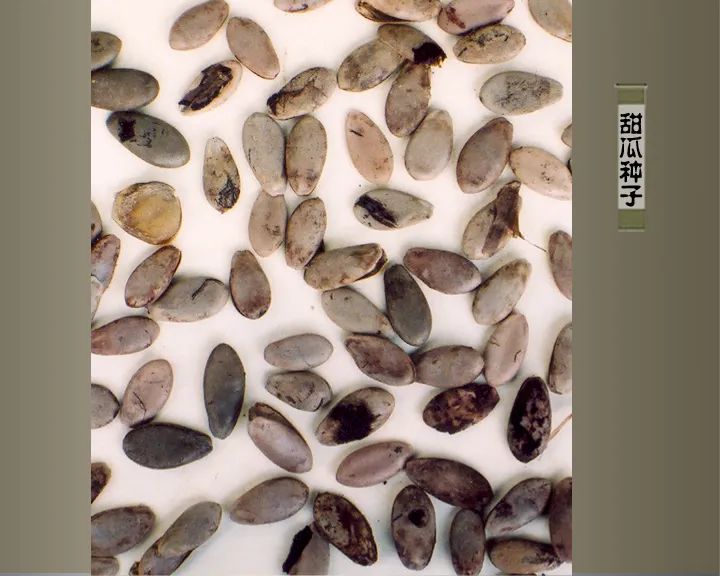
In 2021, melon seeds were found in the body of the tomb of Haiyunhou, which once caused heated discussion among netizens. In fact, it was unearthed in the Rizhao Haiqu Han Tomb excavated in the archeological excavation in 2002.
Gormers are also Chinese plants, and ancient books such as the Book of Songs are mostly recorded. There are also melon seeds unearthed in many tombs excavated in China. Although the melon has been in ancient times, it did not reach the degree of extensive cultivation in the Han Dynasty, and few people eaten by civilians.
Haixunhou belonged to the aristocracy during the Western Han Dynasty. Found melon seeds in his tomb, which shows that the melon was loved by the nobles at the time. It can be speculated that the owner of the Haiqu Han tomb may be rich or expensive.
The ancient city of the same time was unearthed in the tomb of the ancient city
Among the many utensils unearthed from the Haiqu Han tomb, the lacquerware is the most exquisite, and its preservation, a large number, and the varieties are unique in archeological excavations in the northern region.
But it is little known that as early as 35 years ago, Rizhao unearthed a number of lacquerware. In May 1987, the villagers in the ancient city of Xida City in Rizhao Old Town found a tomb when they were under construction. After reporting to the then Linyi District Cultural Management Association at the time, the Rizhao City Museum rescued the Grand Ancient City Tomb with the comrades of the Cultural Management Association. Clean up.

There were 3 Han tombs that were rescued and cleaned at the time. Among them, the utensils of the M3 Han tomb have been extracted by the villagers. M1, M2, and M3 are all rectangular pits and earthen holes, and there are no tombs. The depth of the tomb is unknown because of the soil. During the cleanup, the staff found that the west wall of the M1 tomb broke the east wall of the M2 tomb, and the west wall of M2 broke the east wall of the M3 tomb. Many years of research, it is believed that the Han Tomb of Da Gu City and the Haiqu Han Tomb belong to the same period of the same period, which belongs to the same era.
There are 29 lacquer wares unearthed in the Han tombs of Dagu City, with two types of tires and wooden tires. The categories include, 奁, Zi, ear cups, bowls, scoops, spoons.
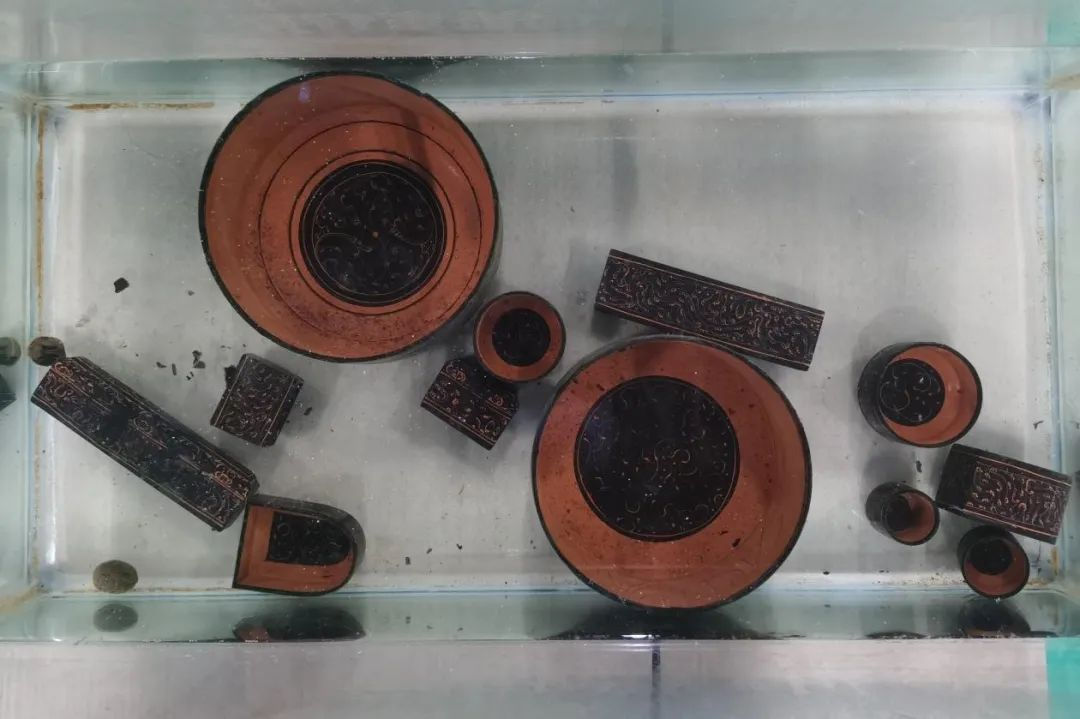
Is the upper and lower parts, covering the top, Zhu painted four -leaf persimmon pattern and cloud gas patterns. There are 3 silver pork horse and cattle animal patterns in the outer cloud and gas pattern. There are 5 pieces of Ziyu, including barrel -shaped, cylindrical, long strips, rectangular, horseshoe shapes.
17 ear cups, all oval, round lips, crescent ears, small flat bottom. The shape is divided into size, and the cup body is different from the decoration and vegetarian surface; 2 bowls, one round lips, deep abdomen, round abdomen, round feet, and painting in the inside of the inside. Lips and oblique belly, flat bottom, black paint inside and outside; 1 scoop, short handle, the end of the handle is beast -shaped, deeper abdomen, and oval in mouth; 2 spoons, one handle, long, long, one handle is long, one handle is long, one handle is long, and one handle is long. The spoon body is peach -shaped, shallow abdomen, and the paint is dark brown and plain in the inside; the other piece is deeper, the handle is shorter, and the handle is carved as a bird's first shape. The black brown in the inside, the handle is decorated with the chopstick, and the black paint is painted with a triangular sawtoch.
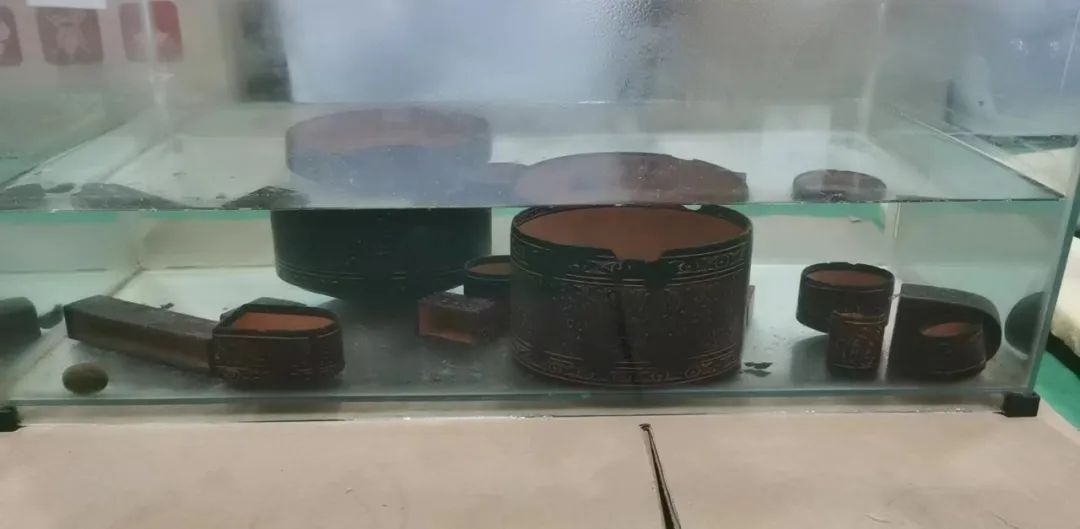
This group of lacquer wares have been kept in the water container of the underground warehouse of the Rizhao Museum. 35 years have passed, and the museum technicians have scientifically maintained them day after day.
Recently, museum technicians have found one of the suspected "walnuts" and "peach cores" in different lacquer wares, and the specific identification content is still waiting for authoritative experts to demonstrate.
The most striking thing is that the Han tomb of Daju City discovered a semiral (musical instrument). This is a long strip, with black paint on the bottom of the surface, and the face is painted along the "well" shape of the "well" shape. The origin of Se is long, and the proportion of the string instruments found in archeological discovery is the largest. The earliest sector had fifty string, so it is also known as the "Fifty Strings" and "Book of Songs": "Lady, Qin Se Youzhi" "I have a guest, drumming."
"Zhou Li · Musical Instrument Picture" records: Yose twenty -three string, twenty -five string of chanting, as a treasure jade, called "Baose", the painting text like a brocade, and "Jinse". The poems of the Tang Dynasty poet Li Shangyin's poem "Jin Se" have a famous sentence of "Jin Se without Fifty Strings, One Strings and One Pillar".
Seevilia was extremely popular in the pre -Qin Dynasty, and the Han Dynasty was also very popular. Its unearthed locations were concentrated in the three provinces of Hubei, Hunan and Henan, and most of them came from the Tomb of the Chu Chu of the Eastern Zhou Dynasty. If we know the tomb of Zeng Houyi in Sui County, Hubei County, and No. 1 Han Tomb No. 1 in Changsha Mawangdui, there are all unearthed. Other provinces such as Jiangsu, Anhui, Shandong and Liaoning are discovered only. It is very rare to find Sei in the Han Dynasty in Shandong. Although it has been damaged, it is very precious.
Related Links
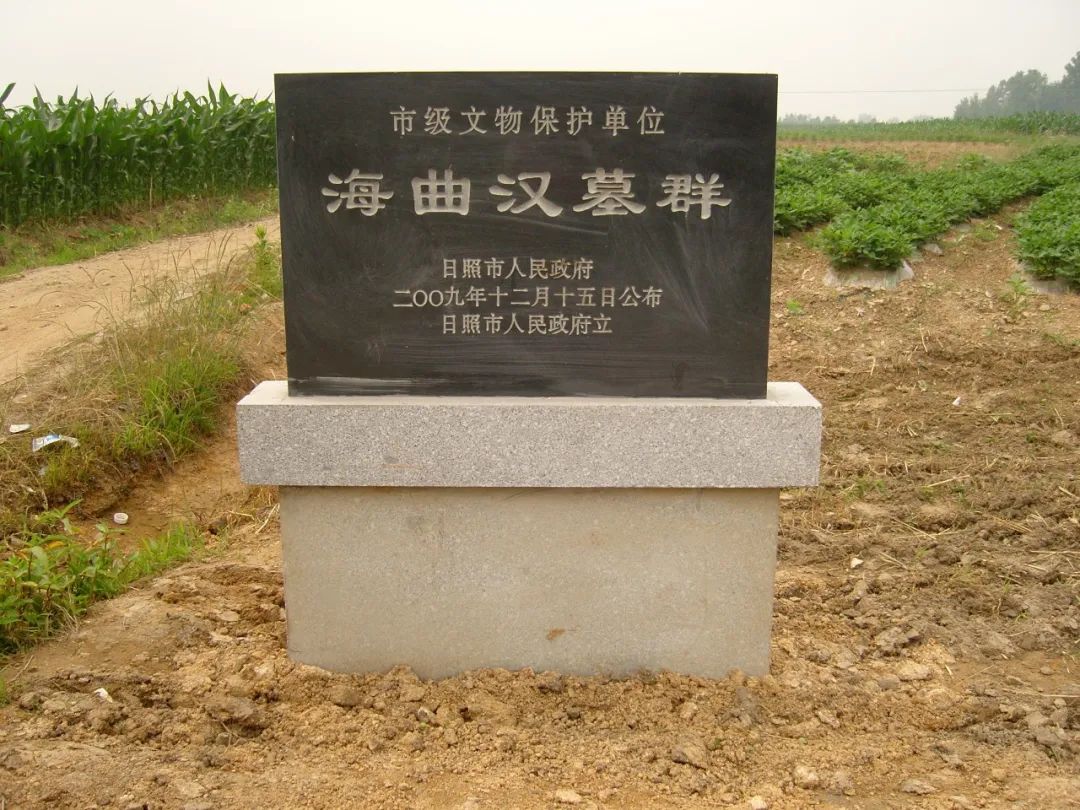
During the Western Han Dynasty, the county in the coastal area of Rizhao was set up in the sea. "Taiping Huanyu Ji · Mizhou · Jixian County" contains: "Haihai County's hometown is 100 sixty miles east of the county, it belongs to Langxie County, and there are salt officials." According to the actual survey of cultural relics, Haiqu Old City is located today 300 meters south of Yantunling Village, Donggang District, covers an area of nearly 120,000 square meters, and the west side of the city still exists to this day. About 1 kilometer southwest of West Shilibao Village, 1 km, a low hilly land, several large land piles called "Wang Grave" and "Niangniang Grave" by locals.
In the spring of 2002, the same three high -speed projects were about to be constructed here. In order to meet the needs of the project, the Shandong Provincial Institute of Cultural Relics and Archeology decided to rescue the excavation of the first, second, and third seals occupied by the highway. This excavation cleaned 90 small and medium -sized tombs, unearthed more than 1,200 pieces such as pottery, copper, lacquer, wood, bamboo, jade, iron, and corners. Therefore, it is located in the hometown of near the sea and is the tomb of the Han Dynasty. Because the tombs are well preserved, the cultural relics are abundant and exquisite, and the tombs are unique. This excavation has been rated as one of the top ten new archeological discoveries in the country in 2002.
All media reporter Xie Yan Correspondent came to keep British Zhang Xuechen
The "Rizhao Daily Video" is new!
- END -
The landmark of Wuhan, Jianghanguan is going to be repaired!The anchor said today
Data-version = 0 data-vwidth = 1920 data-vHeight = 1080 transcoding = 1 / Jianghan Guanzhong Tower is going to be protected!On June 27, the website of the Wuhan Public Resources Trading Cent
Hong Kong's 25th anniversary of the return of the motherland | Festive atmosphere overflows the streets of Hong Kong
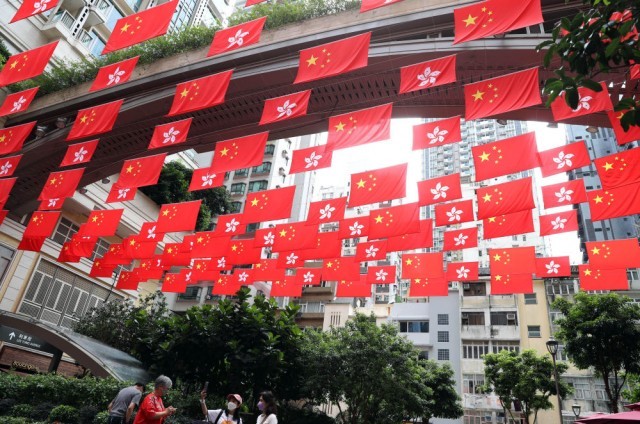
On June 16, in Lidong Street, Hong Kong, the flag of the People's Republic of Chin...